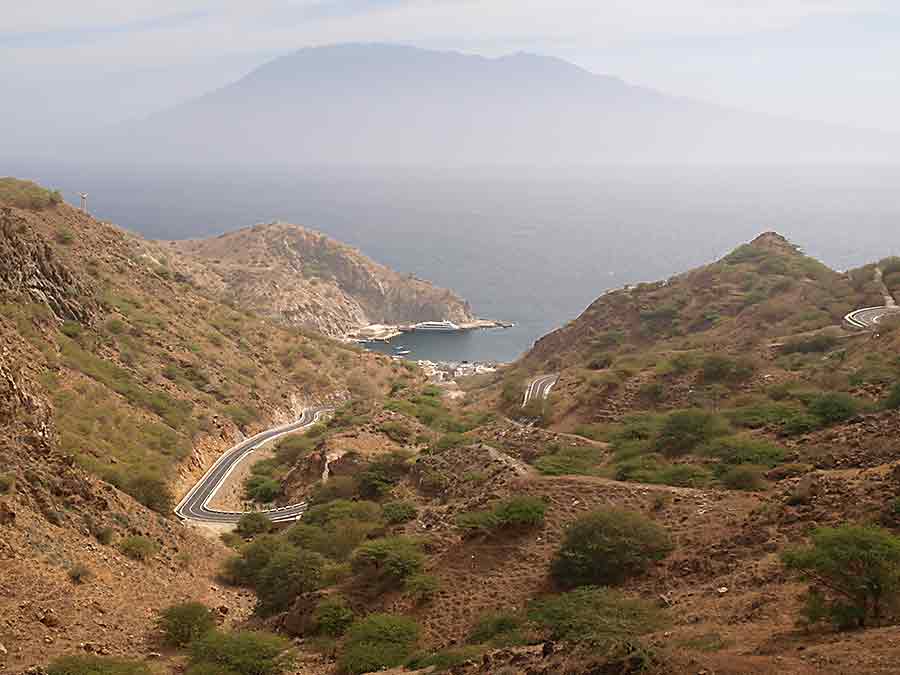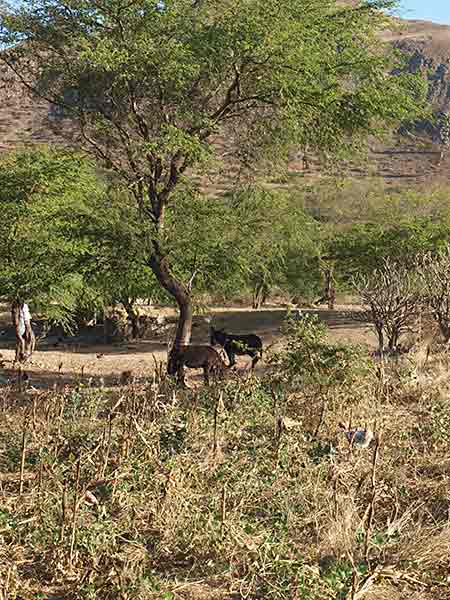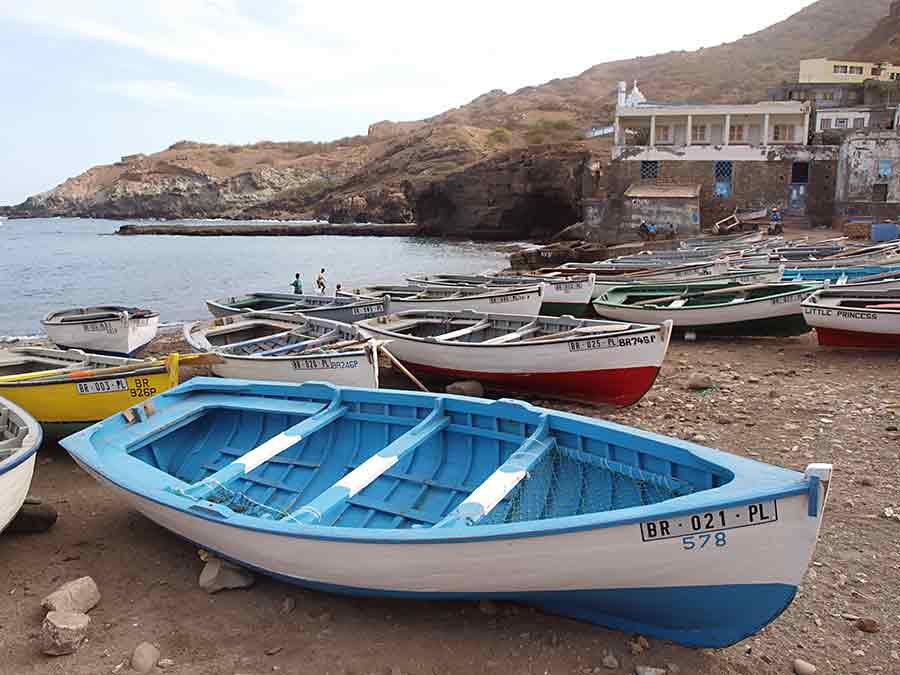Exploring Brava

Mystic of Holyhead (successor to Lynn Rival)
Rachel and Paul Chandler
Mon 4 Mar 2013 23:49
Looking back on our last few days in the Cape
Verdes . . . Part 1 Lynn Rival peacefully anchored at Porta da Furna, Brava We couldn't go to Fogo for a couple of days because - just like us - the ferry doesn't like it when the swell is high. Instead we made a tour of Brava in the back of a pick up truck, accompanied by the crew of another yacht that arrived in the harbour soon after us and John-John, an American-speaking local who acted as our guide.  Looking down on Porto da Furna; the island of Fogo can be seen, ten miles away Brava is a very small, steep-to island with most of the villages and activity inland. Leaving the harbour (Porta da Furna) and after a 6km climb uphill our first stop was Vila Nova de Sintra, the main town. It's a leafy, sleepy place with wide avenues, often shrouded in mist but very attractive.  A typical Cape Verdean road leads to the main square in Vila Nova de Sintra From there we wound our way through the hills and down to the coast on the NW side, where there's a beautiful bay called Faja d'Agua, with a village and cultivated valley behind. A yacht was anchored there but with the big swell it looked very uncomfortable.  No, you can't really be expected to make out the anchored yacht: Faja d'Agua Returning inland, and up again, we stopped at a bar for lunch of grilled local pork and chicken - a delicious alternative to the usual fish and chips. Wherever we went we met very friendly locals, including some visiting emigrants (from the USA). By this time our fellow tourists (Germans and Austrians) were getting involved in a drinking session but we managed to drag them away and headed onward to another lovely bay called Ferreiros on the SW coast. The road only goes as far as the village above, a steep climb up from the bay, so we didn't go down but watched as some of the daily catch was being brought up by fishermen. Although this village was isolated it had everything - nearby was another cultivated valley where John claimed they could grow every fruit and vegetable known to man. Certainly they were growing coconuts, mangoes, papaya and bananas, also peanuts, pumpkins, potatoes, peppers, tomatoes and more. Cows and goats as well as pigs were also a common sight around the island. Along with Fogo, Brava benefits from much more rainfall than most of the other islands so they can take good advantage of the fertile volcanic soil.  Actually it's the fishermen's wives who carry up the catch  . . . and it's quite a hike! Finally we visited another village in the south of the island where there's a cheese factory. By this time we'd been sitting in the back of the pick-up truck for some time and our bums were sore. It's hard work hanging on, especially when travelling over rough cobbled roads that cling to the sides of steep hills. Being Saturday most of the locals were in the football stadium, a match had just finished, and they were happy for us to join them while we waited for John to get us some of the local cheese. (The factory was closed so he had to find the man with the key.) Here we saw some of the blond-haired, and sometimes blue-eyed, Cape Verdeans that Brava and Fogo are famous for - a sign of their unique blend of European and African ancestry.  Tranquility . . .  . . . but not far away Saturday life goes on. The playing surface is also concrete!  Back in Porta da Furna it's Sunday morning and the fleet is idle |